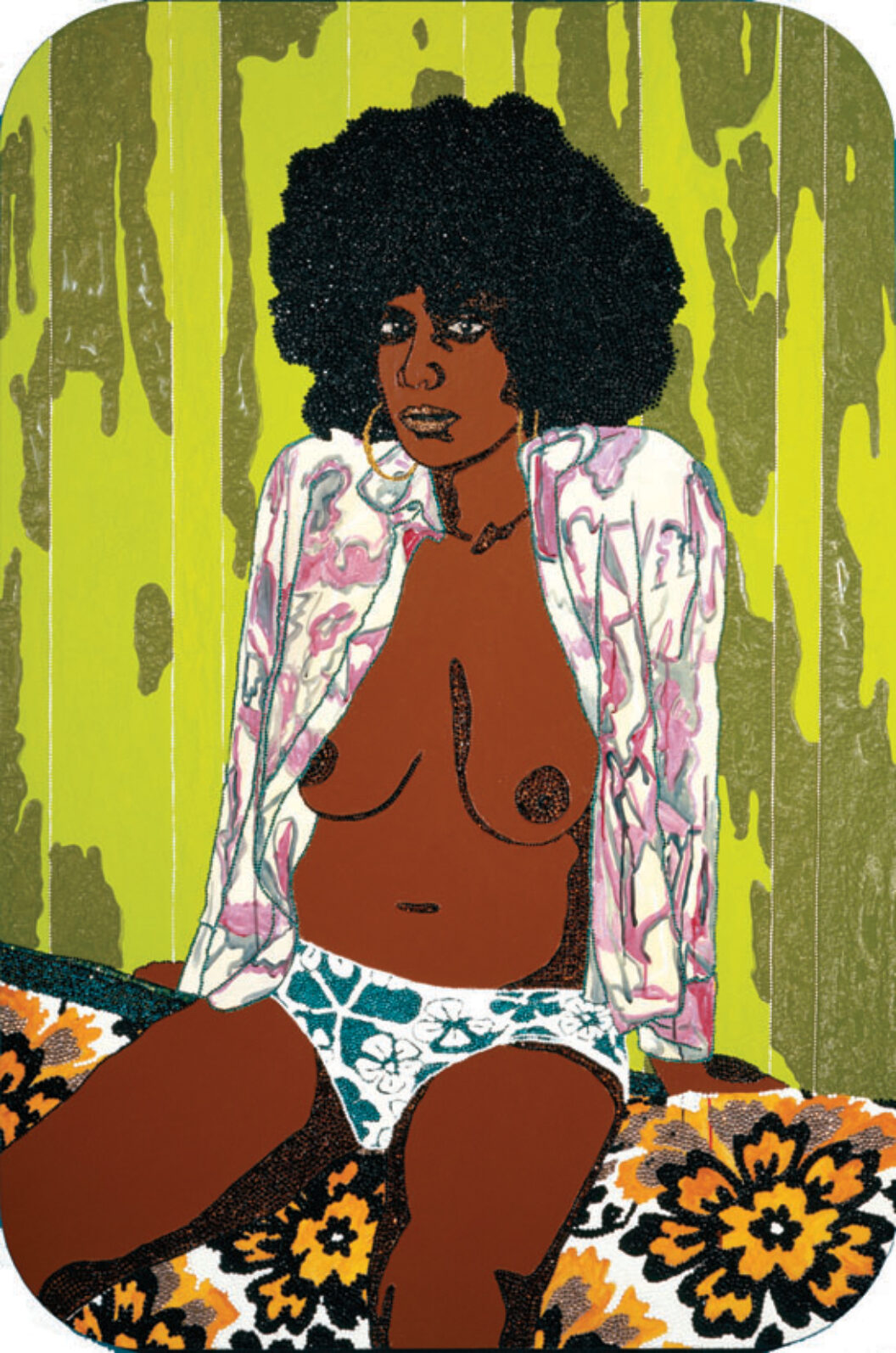Post 4
Art and Women
Five Amazing (living) Working Female Artists
In choosing these five individuals, I was excited to talk about some of my personal favorite living female artists that inspire me within my own practice. I'll admit I'm slightly bias seeing how all the women I chose happen to be women of color, yet I think that in itself is an important to bring into the conversation when talking about art and women. Each taps into distinct perspectives that give value and insight to relevant topics of gender and race in this modern day. With that being said, the first artist I want to talk about is a woman we have already discussed in class; Mickalene Thomas. Best known for her elaborate large scale paintings composed of jewels and rhinestones. Her paintings depict black women and plays with the boundaries that define beauty within the black female body. She breaks all of the rules of traditional painting and yet created this specific lens of portraiture that captivates the viewer. The intimacy of her portraits and the space these individuals exist in within her paintings become part of the representation of these specific individuals. She is most successful in capturing femininity and confidence within the subjects she depicts within her paintings in my opinion. Her work is particularly significant in the context of women and race because of the lack of representation within historical painting. Thomas depict black women as individuals, rather than stereotypical representations that linger from slavery (Mammy, Jezebel). But while also explore sexual freedom and liberation and embracing black beauty as is without European beauty standards as she claims a space for black women that simply was not there. Kara Walker talks Mickalene Thomas
  |
| 'A Little Taste Outside of Love' 2007 and 'I Thought You Said You Were Leaving' 2006 Mickalene Thomas paintings |
| Slaughter of Innocents (They Might be Guilty of Something) 2017 Kara Walker |
| 'Christ's Entry into Journalism' 2017 Kara Walker |
 |
| My Calling (Card) 1986 Adrian Piper |
Another amazing artist i want to focus on is one that has yet to received much acclaim yet who's work has left quite an impression on me. Tshabalala Self is an artist who i had a hard time wrapping my head around at first. Her paintings are mixed media depict the black female from in exaggerated proportions drawing up on stereotypes of the black female form that she both embraces and rejects. It is difficult to signify what these black bodies mean in modern times which is part of the reason why shes creating these forms. She creates these characters in these spaces to just exist leaving them open to possibilities and adjustment, while confronting the fantasies that surrounding the black female form. Her characters are personal and posses a humanity, by queering the black female form she leaves room to redefine and build a new identification with these bodies and how they are perceived. While these pieces seem actively political, when defining ones self as a black woman within these forms, the personal can often be interpreted as political. Again within the context of women race and art I believe it is important that she questions this unanimous perception that either entices the viewer or repulses them. Leaving the viewer to redefine those conceptions on the black female body. Vice interview with Tshabalala Self

 |
| 'Saphire' 2015 Tshabalala Self |
 |
| 'Pieces of Me' 2015 Tshabalala Self |
| Photograph by Lorna Simpson |
| Photograph by Lorna Simpson |
Work Cited
1.“Artists at Work: Lorna Simpson.” Interview Magazine, 24 Aug. 2016, www.interviewmagazine.com/art/artists-at-work-lorna-simpson.
2. Cotter, Holland. “Exploring Identity as a Problematic Condition.” The New York Times, The New York Times, 1 Mar. 2007, www.nytimes.com/2007/03/02/arts/design/02lorn.html.
3. Editors, Artspace. “Everyone's Problem: Adrian Piper Tackles the Complexities of Race Relations Head-On.” Artspace, 30 Dec. 2015, www.artspace.com/magazine/art_101/book_report/adrian-piper-cornered-dca-53390.
4. Felsenthal, Julia. “Kara Walkers New Show Was a Sensation Before It Even Opened.” Vogue, Vogue, 8 Sept. 2017, www.vogue.com/article/kara-walker-sikkema-jenkins.
5. Khan, Karim. “Artist tschabalala self's black mirror.” I-d, 2 Feb. 2017, i-d.vice.com/en_uk/article/d37g8q/artist-tschabalala-selfs-black-mirror.
6. Walker, Kara. “Mickalene Thomas by Kara Walker - BOMB Magazine.” Mickalene Thomas - BOMB Magazine, bombmagazine.org/articles/mickalene-thomas/.
No comments:
Post a Comment
Note: Only a member of this blog may post a comment.